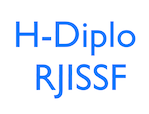The book produced by Alex Weisiger is a substantial contribution to rationalist theory in international relations. Weisiger investigates the effects of commitment problems in international bargaining on the conduct, duration, and destructiveness of wars. The book is among only a few works that closely analyze international history from the perspective of recent developments in the…
Roundtable 7-7, The Triumph of Improvisation: Gorbachev’s Adaptability, Reagan’s Engagement, and the End of the Cold War
Debates over the origins of the Cold War have long been a staple of graduate and undergraduate courses on historiography. Tracing the shifting interpretations of such an important era demonstrates how the writing of history influences and is influenced by the periods in which the history is written. The result has been a familiar tripartite…
Roundtable 7-6, American Allies in Time of War: The Great Asymmetry
The defining characteristic of modern international politics is unipolarity. Never before has one state achieved such a remarkable lead in economic capacity and military capability. American power today is unrivalled and durable, even after the economic crisis of the last decade. It will be a very long time before another state qualifies as a peer…
Roundtable 7-5, External Intervention and the Politics of State Formation: China, Indonesia and Thailand, 1893-1952
The modern state is the most fundamental unit of international politics but the literature on comparative state formation has relatively recent origins.[1] This literature builds on Western European cases and has slowly expanded its comparative scope to cover Asia, Africa, and the Americas. Scholars have debated the role of various factors such as war, religion,…
Forum 3 on “Audience Costs and the Vietnam War”
H-Diplo/ISSF is honored to publish a very special forum on “Audience Costs and the Vietnam War.” The foundation for the forum is two original essays on the topic by Marc Trachtenberg and Bronwyn Lewis. Richard Betts, Robert Jervis, Fredrik Logevall, and John Mearsheimer then offer their own thoughts on both the theoretical and historical issues…
Roundtable 7-4, Zbig: The Strategy and Statecraft of Zbigniew Brzezinski
As our reviewers note, of all the members of the small set of people who have combined distinguished scholarship and a stint as a top policy-maker, Zbigniew Brzezinski is the least studied, especially in comparison to George Kennan and Henry Kissinger. Indeed, the volume under review is the first to be devoted to him, his…
Roundtable 7-3, The Struggle for Order: Hegemony, Hierarchy and Transition in Post-Cold War East Asia
How should we understand the changes in East Asia over the last quarter century? The region that has undergone the most extraordinarily rapid economic transformation in modern history is the subject of fierce contestation regarding the implications of the shifting material balance between East Asia and the powers that dominated in the Cold-War era. The…
Roundtable 7-2, What Good is Grand Strategy: Power and Purpose in American Statecraft from Harry S. Truman to George W. Bush
One could not ask for a more timely book than Hal Brands’s What Good is Grand Strategy? In the same month that Brands’s book was published a rather important figure in American political life offered his own answer. As reported by David Remnick in January 2014, President Obama dismissed the need for a new grand…
Response to Article Review 28 on “New Delhi’s Long Nuclear Journey: How Secrecy and Institutional Roadblocks Delayed India’s Weaponization”
Jayita Sarkar’s generous though critical review of my article flags several aspects concerning its methodology and substance. These criticisms demand answers and I am happy to provide them.
Article Review 28 on “New Delhi’s Long Nuclear Journey: How Secrecy and Institutional Roadblocks Delayed India’s Weaponization”
Gaurav Kampani investigates a crucial research puzzle in nuclear proliferation literature, namely, the possible underpinnings of India’s slow weaponization process. Addressing the period 1989-1999, he argues that despite acquiring nuclear weapons in 1989-1990, New Delhi lacked the capability to “deliver them reliably or safely until 1994-95 or possibly 1996” (81). According to Kampani, it was…

